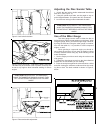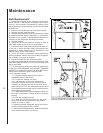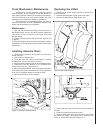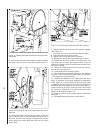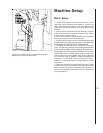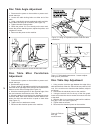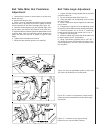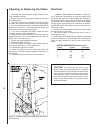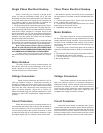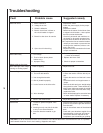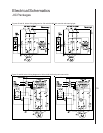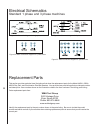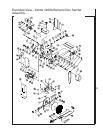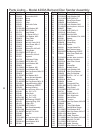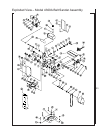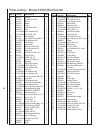
17
Single Phase Electrical Hookup
When connecting your machine to single phase
power, you may be connecting to either 115 or 230 volts,
depending upon the motor type provided. Local codes may,
or may not, permit the use of a plug type of connection for
your machine. Where a plug connection is permitted, the
following installation practices must be followed:
1. The plug used must be a grounding type of plug. That is,
on a 115 volt single phase connection, the plug must be a
three-prong plug with two flat, parallel blades for the power
wires and a single rounded or U-shaped prong for the
ground connection. On 230 volt single phase connections,
the lug must be a three prong plug with two flat blades in
tandem to carry the current, and a third round or U-shaped
prong for the ground connection.
2. The service branch to which the plug is connected must
be a branch with a separate ground wire so the grounding
prong of the plug can be connected to ground effectively.
Note: Local electrical codes in many jurisdictions
DO NOT ALLOW THE USE OF PLUG TYPE CONNECTIONS
FOR SINGLE PHASE POWER WHEN THE MACHINE IS USED
IN A COMMERCIAL OR INDUSTRIAL ESTABLISHMENT.
In these cases you must connect your machine to
the service branch using a hardwired junction box connec-
tion.
Motor Rotation
The motor should be turning counterclockwise, the
belt sander should be moving downward, and the disc
sander should be turning clockwise. These motors are
wired at the factory for correct rotation.
Voltage Conversion
Single phase machines are pre-wired for 115V or
230V per customer request. If it becomes necessary to
change the voltage, remove the back cover from the base
and place the machine on its side. Remove the terminal
cover from the motor. Rewire the motor according to the
motor connection diagram, (Figure 32 or, Figure 33).
Different electrical plugs are required depending on which
voltage you select. This completes the voltage conversion
process.
Circuit Protection
Where the service branch is protected with a fuse or
circuit breaker that has too high a value to offer protection to
the motor supplied, a fuse or circuit breaker box should be
used at the point where the machine connection is made
and the time delay fuse or circuit breaker should be a value
just slightly higher than the maximum load current draw.
Three Phase Electrical Hookup
1. Be certain the power to the branch you are connecting is
off and locked out, so power cannot be reestablished acci-
dentally.
2. Connect the ground wires. These wires will be either
green, or green with a white stripe.
3. Connect the remaining three cable wires to the three
power wires in the service branch.
4. Reestablish the power to the branch.
Motor Rotation
The motor should be turning counterclockwise,
the belt sander should be moving downward and the disc
sander should be turning clockwise. If this is the case, the
machine can be considered wired correctly. If the motor is
not turning in the correct direction, take the following cor-
rective action:
1. Disconnect power in the branch again and be certain it
cannot be accidentally turned on while you correct the wir-
ing.
2. Reverse ANY TWO of the power wires to the machine.
3. Reestablish the power to the machine.
4. Turn the machine on. The motor should now be turning
in the correct direction.
Voltage Conversion
Three phase machines are pre-wired for 230V or
460V per customer request. If it becomes necessary to
change the voltage, remove the back cover from the base
and place the machine on its side. Remove the terminal
cover from the motor. Rewire the motor according to the
motor connection diagram, Figure 32 or, Figure 33). This
completes the voltage conversion process
Circuit Protection
Where the service branch is protected with a fuse or
circuit breaker that has too high a value to offer protection to
the motor supplied, a fuse or circuit breaker box should be
used at the point where the machine connection is made
and the time delay fuse or circuit breaker should be a value
just slightly higher than the maximum load current draw.



